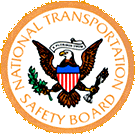Safety Recommendations Issued
 The NTSB says the fatal crash of a Cessna 208 Caravan in Winnipeg, Manitoba, Canada last October “calls into serious question the certification of the Cessna 208 for flight into known icing conditions.” A Jan. 17 letter from the board offers what may be the most scathing indictment yet of the popular turboprop’s capabilities in ice. In that letter, the board told FAA Administrator Marion Blakey the aircraft shouldn’t be allowed to fly in anything but “light” forecast ice and, that at the first sign of ice, pilots should keep airspeed at 120 knots or higher, even if it means descending. The board further recommends that the autopilot be shut off in icing conditions so pilots can detect differences in control forces that might indicate pre-stall conditions. “The Safety Board is very concerned about deficiencies in the cold weather operational procedures used by Cessna 208 pilots and the performance of the airplane in icing conditions,” the board told Blakey. The NTSB was particularly concerned about how fast things went sour for the pilot in the Winnipeg accident. After a by-the-book preflight that included the recently mandated tactile inspection of the upper wing surface, the pilot took off into what were forecast as light to moderate icing conditions. Two minutes into the flight, the pilot told tower controllers she needed to return because of ice and three minutes later the plane crashed on railway tracks in downtown Winnipeg. “The entire accident flight lasted only about five minutes, and the Safety Board is concerned that the airplane, which was certified for flight into known icing, did not maintain flight in moderate icing conditions long enough to successfully land the airplane,” the safety letter reads.
The NTSB says the fatal crash of a Cessna 208 Caravan in Winnipeg, Manitoba, Canada last October “calls into serious question the certification of the Cessna 208 for flight into known icing conditions.” A Jan. 17 letter from the board offers what may be the most scathing indictment yet of the popular turboprop’s capabilities in ice. In that letter, the board told FAA Administrator Marion Blakey the aircraft shouldn’t be allowed to fly in anything but “light” forecast ice and, that at the first sign of ice, pilots should keep airspeed at 120 knots or higher, even if it means descending. The board further recommends that the autopilot be shut off in icing conditions so pilots can detect differences in control forces that might indicate pre-stall conditions. “The Safety Board is very concerned about deficiencies in the cold weather operational procedures used by Cessna 208 pilots and the performance of the airplane in icing conditions,” the board told Blakey. The NTSB was particularly concerned about how fast things went sour for the pilot in the Winnipeg accident. After a by-the-book preflight that included the recently mandated tactile inspection of the upper wing surface, the pilot took off into what were forecast as light to moderate icing conditions. Two minutes into the flight, the pilot told tower controllers she needed to return because of ice and three minutes later the plane crashed on railway tracks in downtown Winnipeg. “The entire accident flight lasted only about five minutes, and the Safety Board is concerned that the airplane, which was certified for flight into known icing, did not maintain flight in moderate icing conditions long enough to successfully land the airplane,” the safety letter reads.
The NTSB says the fatal crash of a Cessna 208 Caravan in Winnipeg, Manitoba, Canada last October “calls into serious question the certification of the Cessna 208 for flight into known icing conditions.” A Jan. 17 letter from the board offers what may be the most scathing indictment yet of the popular turboprop’s capabilities in ice. In that letter, the board told FAA Administrator Marion Blakey the aircraft shouldn’t be allowed to fly in anything but “light” forecast ice and, that at the first sign of ice, pilots should keep airspeed at 120 knots or higher, even if it means descending. The board further recommends that the autopilot be shut off in icing conditions so pilots can detect differences in control forces that might indicate pre-stall conditions. “The Safety Board is very concerned about deficiencies in the cold weather operational procedures used by Cessna 208 pilots and the performance of the airplane in icing conditions,” the board told Blakey. The NTSB was particularly concerned about how fast things went sour for the pilot in the Winnipeg accident. After a by-the-book preflight that included the recently mandated tactile inspection of the upper wing surface, the pilot took off into what were forecast as light to moderate icing conditions. Two minutes into the flight, the pilot told tower controllers she needed to return because of ice and three minutes later the plane crashed on railway tracks in downtown Winnipeg. “The entire accident flight lasted only about five minutes, and the Safety Board is concerned that the airplane, which was certified for flight into known icing, did not maintain flight in moderate icing conditions long enough to successfully land the airplane,” the safety letter reads.


































